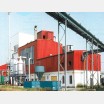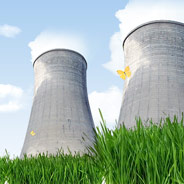Waste-to-energy (incineration)

Industrial development and the consumerist way of life unfortunately cause an increased production of waste. Waste is mainly produced by:
- municipal sphere – households, offices, schools,
- health and medical care –hazardous waste,
- agriculture,
- forestry,
- industry – produces the largest amount of waste; produces different types including hazardous waste.
Even after using all available methods of recycling, a relatively wide range of various waste types remains (e.g. from chemical industry, metal processing, medical care), for which there is only one method ensuring their safe disposal – waste-to-energy (incineration).
Waste-to-energy
All types of waste have the potential to become chemically bound energy, which can be, via suitable processes, altered to electrical or thermal energy. Due to modern technology such waste processing is safe and environmentally friendly.
The technological process of waste-to-energy is complicated and proceeds in several stages:
- Thorough examination of waste (type and quality), registration of waste by category.
- Safe storage of waste in warehouses (bunkers for solid waste, waste warehouses for individual shipments – drums, barrels, IBC containers, liquid waste tanks etc.).
- Determination of appropriate and safe disposal methods – for this reason suppliers are required to state precisely the contents and formation of waste.
- The process of waste-to-energy itself.
The output of waste-to-energy is:
- heat (steam, hot water),
- electrical energy,
- a small amount of secured solid products (ash, slag, fly ash – about 1/10 of the input amount of waste),
- separated iron scrap and metals for further utilization,
- combustion exhaust gas, which is filtered and then released.
Accepted forms of waste
Industrial and hazardous waste in various forms is accepted for further processing – from individual articles to paste and liquid waste.
Waste is transported in containers corresponding to its type and physical properties.
- Solid waste and individual articles are transported in containers of various capacity.
- Paste and liquid waste is transported in barrels, drums, and larger amounts of liquid waste are transported in tanks.
- Waste from medical and veterinary facilities, which may be infectious, is transported in disposable sealed plastic or paper packaging which is incinerated.
Is waste incineration ecological?
Incineration and waste-to-energy (industrial and hazardous waste) can be regarded as one of the safest methods of waste disposal. Why?
- During an incineration process, waste is transformed into energy, which would otherwise have to be produced using fossil fuels.
- Incineration process is continuously monitored with respect to its impact on the environment and due to modern technologies only a small amount of pollution enters the atmosphere.
- The waste left after incineration accounts for 1/10 of the total amount, which would otherwise be disposed of in landfill sites.

